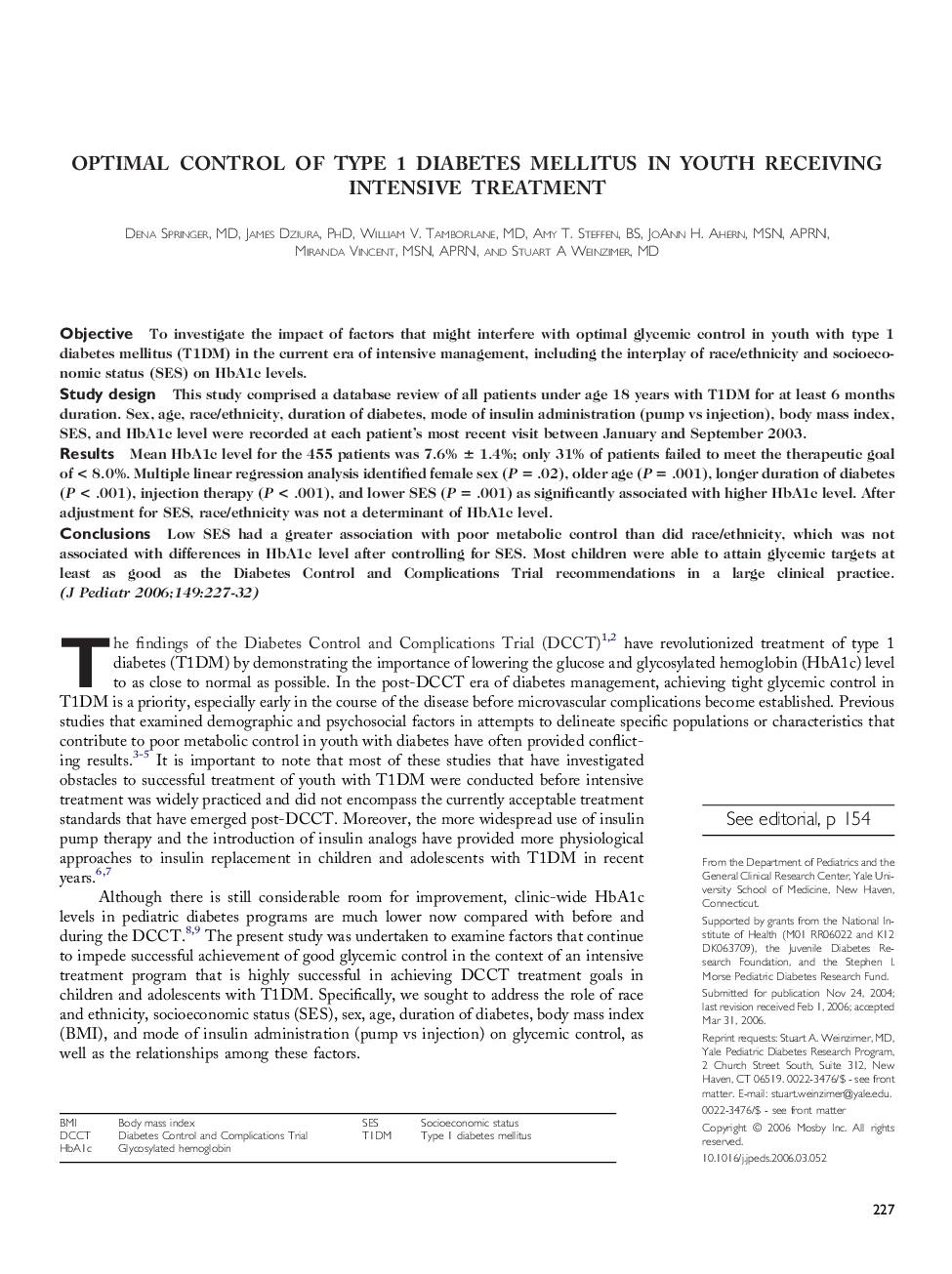| Article ID | Journal | Published Year | Pages | File Type |
|---|---|---|---|---|
| 4168858 | The Journal of Pediatrics | 2006 | 6 Pages |
ObjectiveTo investigate the impact of factors that might interfere with optimal glycemic control in youth with type 1 diabetes mellitus (T1DM) in the current era of intensive management, including the interplay of race/ethnicity and socioeconomic status (SES) on HbA1c levels.Study designThis study comprised a database review of all patients under age 18 years with T1DM for at least 6 months duration. Sex, age, race/ethnicity, duration of diabetes, mode of insulin administration (pump vs injection), body mass index, SES, and HbA1c level were recorded at each patient’s most recent visit between January and September 2003.ResultsMean HbA1c level for the 455 patients was 7.6% ± 1.4%; only 31% of patients failed to meet the therapeutic goal of < 8.0%. Multiple linear regression analysis identified female sex (P = .02), older age (P = .001), longer duration of diabetes (P < .001), injection therapy (P < .001), and lower SES (P = .001) as significantly associated with higher HbA1c level. After adjustment for SES, race/ethnicity was not a determinant of HbA1c level.ConclusionsLow SES had a greater association with poor metabolic control than did race/ethnicity, which was not associated with differences in HbA1c level after controlling for SES. Most children were able to attain glycemic targets at least as good as the Diabetes Control and Complications Trial recommendations in a large clinical practice.
